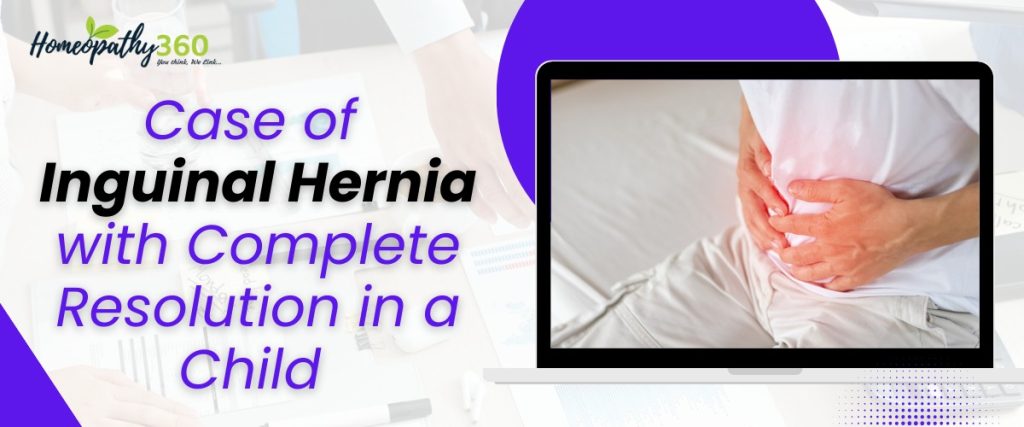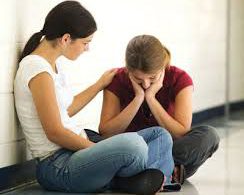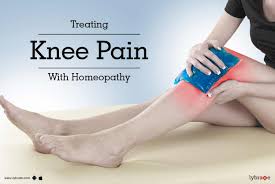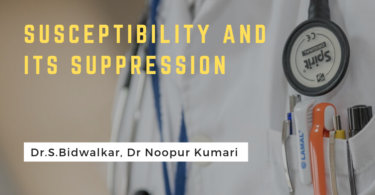
Abstract
Hernias are defined as the protrusion of all or part of an organ through the wall that contains it. Inguinal hernias exit through the superficial inguinal ring and can be classified as either direct or indirect, depending on their site of exit. Indirect inguinal hernias are more commonly observed in younger individuals, while direct inguinal hernias are typically seen in older individuals.In the following case, an indirect inguinal hernia was associated with a traumatic cause that led to muscle strain, resulting in the development of the hernia, likely due to the underlying weakness of the abdominal muscles in the child. Remarkably, a complete cure was achieved solely through homeopathic treatment, rather than conventional surgical methods. This case demonstrates that homeopathy can effectively provide complete cures even in surgical conditions. Evidence of recovery is illustrated through before-and-after ultrasound imaging.
Keywords
Homoeopathic, Inguinal hernia, Complete Resolution, Child
Introduction
Inguinal hernias anatomically emerge through the superficial inguinal ring and can be classified into two main types: indirect (or oblique) and direct.
An indirect inguinal hernia occurs when tissue protrudes from the abdominal cavity through the deep inguinal ring, traveling along the inguinal canal before becoming visible at the superficial inguinal ring. In contrast, direct inguinal hernias enter the inguinal canal through the medial half of its weak posterior wall, specifically through Hesselbach’s triangle, and then extend to the superficial inguinal ring. A hernia is considered complete when its contents have descended to the bottom of the scrotum; otherwise, it is classified as incomplete.
Oblique inguinal hernias comprise more than 80% of inguinal hernia cases. This type of hernia descends obliquely downward and inward and reduces obliquely in the opposite direction. An oblique inguinal hernia does not typically reduce on its own, and if it is reduced, it may require some manipulation or a cough to bring it down. If the internal ring is occluded, the hernia cannot be expelled even with coughing. There are two forms of inguinal hernias observed in practice: congenital and acquired.
Clinically, hernias can be categorized into the following types:
1. Reducible hernia: An uncomplicated hernia that can have its contents returned to the abdominal cavity, but the sac remains in place.
2. Irreducible hernia: The contents cannot be returned to the abdomen, but this does not imply any complication.
3. Obstructed or incarcerated hernia: The hernia causes intestinal obstruction due to occlusion of the bowel lumen.
4. Strangulated hernia: The contents are so restricted that blood supply is compromised.
5. Inflamed hernia: A rare condition that mimics a strangulated hernia, occurring when contents such as the appendix, fallopian tube, or Meckel’s diverticulum become inflamed.
6. Sliding hernia: This type involves a segment of extra-parietal bowel, usually the cecum on the right side or pelvic colon on the left, alongside usual contents in the sac.
7. Richter’s hernia: In this case, only a portion of the bowel’s circumference becomes strangulated, often complicating a femoral hernia.
8. Littre’s hernia: A hernia that contains Meckel’s diverticulum.
9. Maydl’s hernia: Also known as retrograde strangulation, this condition involves two loops of bowel remaining in the sac while a connecting loop stays within the abdomen and becomes strangulated.
The conventional medical approach primarily suggests surgical intervention as the treatment for inguinal hernias, while homeopathy is seen as an adjunctive or complementary treatment for associated symptoms. Further exploration of these treatments could enhance our understanding of the effectiveness and potential of homeopathic approaches in managing such cases.
- Case Presentation
A 4-year-old boy was brought to the Medicine outpatient department of S.S. Agraval Homoeopathic Medical College on February 27, 2024, by his parents. He was complaining of a painful swelling in the left inguinal region, which was sore to the touch, and the lump had descended into the scrotum. The issue began after the child sustained an injury when he was struck by a window while playing, indicating that the trauma was the cause of his condition. The pain worsened with touch but improved with pressure, such as bending forward.The parents had previously consulted a surgeon, who diagnosed the child with a left-sided inguinal hernia and recommended surgery. However, due to the child being only 4 years old, the parents were hesitant to proceed with the surgical option. They sought a second opinion and decided to pursue homeopathic treatment instead, which resulted in a rapid, gentle, and permanent cure for the condition. There were no further associated complaints.
- Past History
No major illness.
- Family History
Both parents are healthy & so is the grandparent generation from both side.
- Personal History (Physical general )
- Appetite- 4 meals a day including breakfast & snacks
- Thirst- 8-10 glasses a day, unaffected by complaints
- Desire- not specific
- Aversion- not specific
- Stool- normal, satisfactory, unaffected by complaints
- Urine- 7-8 times a day, unaffected by complaints
- Perspiration- scanty, generalized
- Sleep- adequate
- Habit- loves to play, physically active
- Thermal status: Ambithermal
- General Examination
- State of Nutrition- good
- Built up- lean, thin, active
- Height- 3’7”
- Weight- 13.58kg
- P/R- 68
- BP- 90/60 mm of hg
- RR- 15/min
- Tongue- pink,moist
- Skin- hydrated, nourished
- Only one specific mental general was noted, the fear of being touched because of the pain.
- Local Examination
- Inspection: Swelling and inflammation are present from the left inguinal region, extending to the scrotum. The overlying skin appears normal. An impulse on coughing causes the swelling to expand.
- Palpation: The swelling descends to the scrotum. It is doughy, soft, and mildly tender.
- Systemic Examination
- Respiratory Examination: Air entry is equal bilaterally upon auscultation.
- Cardiovascular System: S1 and S2 heart sounds are heard normally upon auscultation.
- Abdominal Examination: Inspection- There is swelling and inflammation present in the left inguinal region, extending to the scrotum. The overlying skin appears normal. An impulse is noted on coughing, causing the swelling to expand.Palpation: The swelling descends into the scrotum and is described as doughy, soft, and mildly tender.
- Nervous System: The patient is conscious, well-oriented, and cooperative.
- Musculoskeletal System: No abnormalities detected.
- Diagnosis & Clinical Assessment
The diagnosis is determined based on the medical history, clinical symptoms, and ultrasonography findings.The ultrasound report for the abdomen and pelvis, dated February 22, 2024, indicates the following:
A left-sided indirect inguinal hernia is present, with a herniated bowel loop observed and a mild fluid collection in the hernia sac extending to the base of the scrotum. The wall defect measures up to 12 mm in the left inguinal region.
- Analysis & Evaluation
- The analysis & evaluation was done with the Boger Synoptic Key as it resonated with the pathological symptoms in the given case.
- A/f- injury due to striking with window while playing –causative modality- Grade 1
- Fear of being touched- symptom- qualified mental general-Grade 2
- Soreness & pain in left inguinal region- symptom- pathological general- Grade 3
- Swelling in left inguinal region & scrotum- symptom- pathological general- Grade 3
- Totality of Symptom (Boger’s Totality)
- A/f- Injury( being hit by a window while playing ) (causative modality)
- Fear of being touched because of soreness
- Soreness & Pain in left side (inguinal) region of abdomen
- Pain < touch
>pressure (bending forward)
- Approach to the case was Repertorial, Repertorization was done with the Boger’s Synoptic Key. The repertorization is mentioned below:
- Condition of Aggravtion & Amelioration in General- Pressure- Amelioration
- Mind- Touched or approached, aversion to
- Stomach & Abdomen- lower abdomen- cramps
- Stomach & Abdomen –pressure, amelioration from
- Miasm- Miasm is not involved as the injury is adynamic in nature.
- Group of Remedies– Colocynth, Arnica, Nux Vomica
- Selection of Remedy with Reason :
- 1. Arnica– (Lecture on Materia Medica by Dr. J.T.Kent)- doesn’t want to be touched due to bodily soreness,people who have grown through soreness & bruise from injury. Most misused & misunderstood remedy- used for soreness & bruise, therefore very important in treating cases from injuries / trauma , useful in inflammatory condition of abdomen, liver, intestines, so sore that it cannot be touched.
- 2. Colocynth– (Lecture on Materia Medica by Dr. J.T.Kent)- severe tearing, neuralgic pain, pain occurs in abdomen along the course of nerves, pain occur generally left sided, comes in waves. Pain are digging like grabbed by fingers. Pain in lower abdomen, better from hard pressure (bending forward/double). In Herring’s Guiding Symptoms, it is known to be extensively applicable in abdominal complaint with these symptoms. Pains are relieved by drawing limbs upwards.
- Final Prescription– 27.02.2024
1. Arnica 1M III Doze
2. Colocynth 30 TDS for 1 Week
- Follow up:
| Date | Symptoms | Prescription |
| 12/03/2024 | Status quo, pain as it is | 1.Arnica 1M III Doze2. Colocynth 30 TDS for 15 days |
| 26/03/2024 | Better, intensity of pain reduces | 1.Colocynth 30 TDS for 7 days2.Nihilinum TDS for 15 days |
| 09/04/2024 | Pain & Inflammation reduces | 1.Thuja 200 III Doze2. Nihilinum TDS for 15 days |
| 28/05/2024 | Much Better | 1. Nihilinum TDS for 15 days |
| 09/07/2024 | Better | 1.Rubrum TDS for 15 days |
| 25/09/2024 | Much better | 1. Nihilinum TDS for 15 days |
| 13/08/2024 | Pain absent, No sign of Inflammation | 1.Thuja 1M III doze 2. Nihilinum TDS for 15 days |
- Outcome
- A repeat USG Abdomen & Pelvis was advised to verify the results with the investigatory evidence, along with a USG Inguino-Scrotal Region. The impression that was found was – no significant abnormality is detected & normal scrotal sonography at present, respectively.
- The evidential investigation is mentioned below in the pictorial form.
BEFORE AFTER
Fig. 1 – USG before Homoeopathic Treatment Fig. 2- USG after Homoeopathic Treatment
Fig. 3- USG after Homoeopathic Treatment
- Discussion & Conclusion
The case involved a traumatic cause leading to an inguinal hernia, which highlighted the underlying weakness of the abdominal muscles. The modalities and causative ailments were key in prescribing the appropriate remedy. It’s unfortunate that we often undermine the rich homoeopathic literature that our esteemed predecessors carefully curated, filled with clinical findings that resonate effortlessly with the nosological diseases we study today in allied sciences. As previously mentioned, both the lecture on Materia Medica and Boger’s Synoptic Key clearly pointed toward the remedy. Even without repertorization, prescribing based solely on a thorough knowledge of Materia Medica led us to the right choice. Given the patient’s high susceptibility and the clarity of the cause, high potency was prescribed. Arnica was chosen to address both the causation and the patient’s mental state, as well as the pathological general symptoms. Meanwhile, Colocynth was selected to alleviate the pain and address the modalities, ultimately providing cure and relief. Thuja was designated as an intercurrent remedy in case of a mild relapse of symptoms. The improvement was steady and promising, and the same remedies continued to provide relief. There are many areas in homoeopathy that remain unexplored because of rigid norms and a lack of understanding of its true potential. As Dr. Elizabeth Wright aptly said, “A well-taken case is half cured.” When characteristic symptoms are noted, healing occurs effectively and immediately. Dr. H.A. Robert also emphasized that it is not homoeopathy that fails in a case, but rather the homoeopath’s lack of knowledge that leads to unsatisfactory results. It is high time we give back to our field what it truly deserves.
- Reference
- Somen Das, A Manual on Clinical Surgery, 14th edition, 2019, Kolkata.
- Cyrus Maxwell Boger, A Synoptic Key of Materia Medica ,Revised editon, Published by B Jain Publishers, Private Limited.
- James Tyler Kent, Lectures on Homoeopathic Materia Medica, 2nd Rearranged edition (2009), 47th Impression.
- Hahnemann S, Organon of Medicine [R.E. Dudgeon,W.Boericke,trans] 6th edition,New Delhi: Indian Books & Periodicals Publishers; April,2004.
- Sarkar BK, Organon of Medicine by Samuel Hahnemann ,10th Edition Delhi, Birla Publication Pvt Limited;2005-2006.
Author
Dr. Nitin Vashi(M.D Homoeopath)
Dr. Yashvi Naik (Intern)





